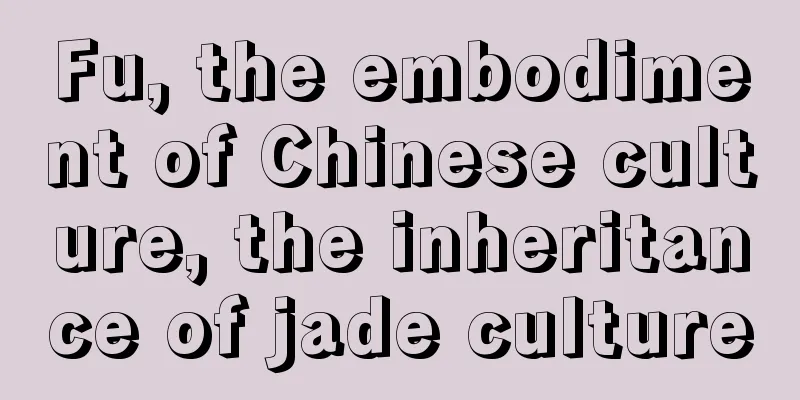A must-see when buying jadeite! Insider talk about jade, worth collecting

|
The development, trading and evaluation of jade have formed some idioms and jargon in the long historical evolution, which are still widely used today. When laymen hear these "jargons", they are often confused, but insiders can tell the depth of the other party's "experience" from a simple conversation. This is one of the important reasons why so many jade newcomers find the jade industry mysterious. So what are the “jargons” in the jade industry? 1. Terminology 1. Color 1. Jade: The red and yellow parts of jade, also known as "red jade" and "yellow jade". 2. Jade: The green part of jade is due to the presence of trace elements of chromium and iron. 3. Chun: The purple part of jade, also known as "violet". 4. Chundaicai: Green and purple colors appear on a piece of jade raw material or finished product at the same time. 5. Yellow seedling green: This green is very clean and has no interference from coloring elements. Its color is darker yellow, like the tender green leaves sprouting in spring. 6. Fu Lu Shou: Refers to the simultaneous appearance of three colors on a piece of jade raw material or finished product, including green + yellow + white, yellow + green + purple... (II) Defects 1. Cracks: Cracks in jade are mostly caused by tectonic movements of the earth’s crust and are proof of being a natural jade. 2. Stone flowers: white patches densely packed together in jade. 3. 绯: The black part in jade, mainly due to the carbon or magnetite content in jade. (III) Others 1. Water head: The transparency of jadeite, often measured by long, short, good or bad. 2. Dry: The transparency of the jade is poor, and the jade is generally made of coarse grains. 3. Jade properties: The grains in jade are short columnar crystals with two sets of cleavages on parallel columnar surfaces. Under the light, flaky flashes can be seen on the cross-section, and the thickness of the crystals can be seen through the flashes. This is called "fly wings" in the industry and is an important sign for identifying jade. 5. Rigidity: Jade has a fine texture and a tight structure. After polishing, it has a strong reflective surface, like the surface of steel. 6. Old mine type: Jade with color that is "positive, rich, fresh, and even" with fine texture and good transparency. 7. New pit type: Jade with light color and tender texture. 8. Impersonation goods: refers to jadeite with many colors, which looks like high-priced goods, but a closer look will reveal that the colors are not correct. fcgc66 fcgc99 |
<<: Common identification methods of jadeite
Recommend
Revealing the "three major killers" who impersonate Violet, all exposed in one article!
Speaking of shortcuts to getting rich overnight, ...
There is a kind of emerald beauty - the beauty of sky, blue water!
Sky blue ---- top quality blue jadeite Blue water...
Not all jade carvers can think of processing jade snowflake cotton in this way
Jade is formed under low temperature and high pre...
Piaohua vs Piaozhen, only one letter difference, but a world of difference in value
Floating flower jadeite has been loved by many ja...
To distinguish B and C grade jadeite with naked eyes, just look at these three points
It is not necessarily reliable to identify B and ...
This is the collision of Chinese and Western cultures, experience the ultimate beauty of jade and diamonds
Jade jewelry is the most beloved jewelry among Or...
Does Jadeite Have Collection Value? (Personal Opinion)
First of all, no matter what collectible items ar...
Appreciation of the bright green jadeite
If jade were a poem Then it is colorful. It is co...
When investing in jadeite, you must understand that "scarcity makes things valuable"
Although many collectors can be regarded as exper...
The "yin-yang face" jade is outdated. The new method of counterfeiting the 1 million jade egg-shaped face can even deceive the identification equipment
The overall collection value of jadeite in the ma...
How to wear the jade peace locket to look better
The jade peace locket is a traditional jade ornam...
Appreciation of the exquisite jadeite brooch at the auction: a perfect combination of classic and fashion
Every year, many beautiful jade jewellery pieces ...
If you only have a piece of jadeite raw stone, how should you maintain it and prevent it from depreciating?
Normally, we come across many methods of jade mai...
The owner fell in love with the jadeite at first sight at a street stall, and after several rounds of carving, the finished product was so enviable that it made others envious!
Green Tara The statue of Green Tara is dressed in...
Cut a piece of Damakan jadeite raw stone, and make a vivid Pixiu. Do you like it?
The jadeite rough stone I bring to you today is a...









